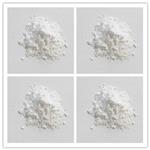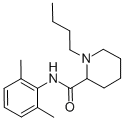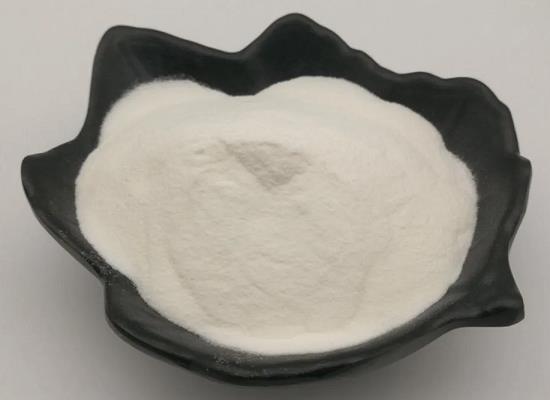Bupivacaine: mechanism of action, clinical applications and safety
General Description
Bupivacaine is a local anesthetic that works by blocking the conduction of nerve impulses, providing temporary numbness or loss of sensation in specific areas of the body. It achieves this by binding to sodium channels on nerve cell membranes and inhibiting the influx of sodium ions. This mechanism prevents the generation and transmission of nerve impulses, resulting in local anesthesia. Bupivacaine is commonly used for regional anesthesia, such as epidurals during labor and delivery, post-operative pain management, nerve blocks, and dental procedures. While generally safe, there are potential risks of toxicity and allergic reactions. However, when administered in appropriate doses and monitored by healthcare professionals, bupivacaine is considered a safe and effective local anesthetic option.

Figure 1. Injection of bupivacaine
Mechanism of action
Bupivacaine is a local anesthetic commonly used in medical and dental procedures to induce temporary numbness or loss of sensation in specific areas of the body. The mechanism of action of bupivacaine involves blocking the conduction of nerve impulses by inhibiting the influx of sodium ions into the nerve cells. Bupivacaine belongs to the amide class of local anesthetics and is chemically similar to lidocaine. It works by binding to voltage-gated sodium channels present on the nerve cell membrane. These sodium channels are responsible for the initiation and propagation of nerve impulses. When bupivacaine binds to these sodium channels, it blocks the passage of sodium ions through the channels, preventing the depolarization of the nerve cell. This blockade effectively inhibits the generation and conduction of nerve impulses along the nerve fibers, leading to a reversible loss of sensation in the targeted area. Due to its long duration of action, bupivacaine is often preferred for procedures requiring prolonged anesthesia or post-operative pain management. In summary, bupivacaine acts by blocking sodium channels, thereby preventing the transmission of nerve impulses and producing local anesthesia. 1
Clinical applications
Bupivacaine is a widely used local anesthetic medication with a variety of clinical applications. It belongs to the amide group of local anesthetics and is known for its long duration of action and potent analgesic effects. One of the primary clinical uses of bupivacaine is in regional anesthesia, particularly for surgical procedures requiring longer-lasting pain relief. It is commonly employed for epidural anesthesia during labor and delivery, as well as for postoperative pain management. Bupivacaine can provide prolonged pain relief, allowing patients to recover more comfortably and reducing the need for systemic opioids. In addition to regional anesthesia, bupivacaine is also utilized in nerve blocks to provide targeted pain relief for specific areas of the body. This includes peripheral nerve blocks for orthopedic surgeries, such as joint replacements, and for chronic pain management, such as in the treatment of neuropathic pain syndromes. Furthermore, bupivacaine finds application in dental procedures, where it is used for local anesthesia to numb the oral cavity, facilitating painless dental treatments. Overall, bupivacaine is a versatile local anesthetic agent that plays a crucial role in various clinical settings, providing effective and long-lasting pain relief for patients undergoing surgery, experiencing labor pains, or requiring dental procedures. 2
Safety
Bupivacaine is a local anesthetic commonly used in medical procedures to numb specific areas of the body. While it is generally considered safe, there are some potential risks and side effects that should be taken into consideration. One of the main safety concerns with bupivacaine is the risk of toxicity, which can occur if too much of the drug is administered or if it is absorbed into the bloodstream. Symptoms of bupivacaine toxicity can include seizures, cardiac arrest, and respiratory depression. Therefore, it is important for healthcare professionals to carefully monitor patients who receive bupivacaine and to administer the drug in appropriate doses. Another potential safety concern is the risk of allergic reactions, which can range from mild skin irritation to life-threatening anaphylaxis. Patients who have a known allergy to bupivacaine or other local anesthetics should not receive this medication. In addition, bupivacaine can cause temporary side effects such as numbness, tingling, and muscle weakness. These side effects are usually mild and go away on their own within a few hours. Overall, bupivacaine is considered a safe and effective local anesthetic when used appropriately by trained healthcare professionals. 3
Reference
1. Babst CR, Gilling BN. Bupivacaine: a review. Anesth Prog. 1978 May-Jun;25(3):87-91.
2. Uskova A, O'Connor JE. Liposomal bupivacaine for regional anesthesia. Curr Opin Anaesthesiol. 2015 Oct;28(5):593-597.
3. Cherobin ACFP, Tavares GT. Safety of local anesthetics. An Bras Dermatol. 2020 Jan-Feb;95(1):82-90.
);You may like
Related articles And Qustion
See also
Lastest Price from Bupivacaine manufacturers

US $0.00-0.00/KG2024-05-21
- CAS:
- 2180-92-9
- Min. Order:
- 1KG
- Purity:
- 99%
- Supply Ability:
- 500

US $3.00-1.00/kg2024-04-12
- CAS:
- 2180-92-9
- Min. Order:
- 1kg
- Purity:
- 99.9%
- Supply Ability:
- 10 tons




